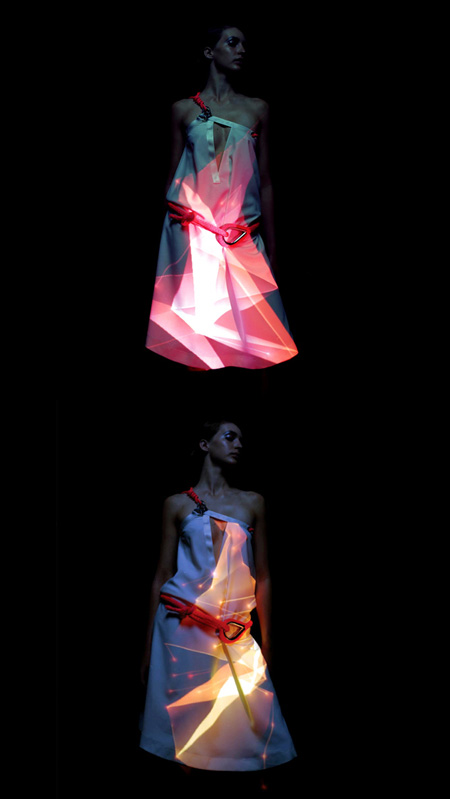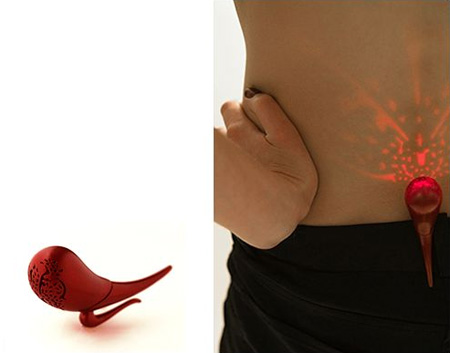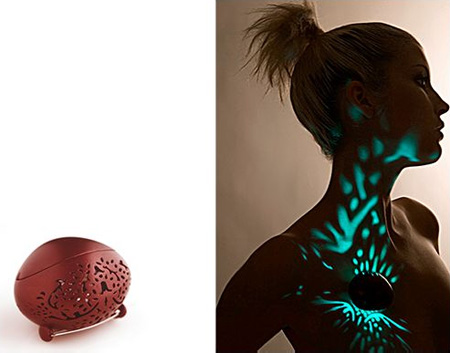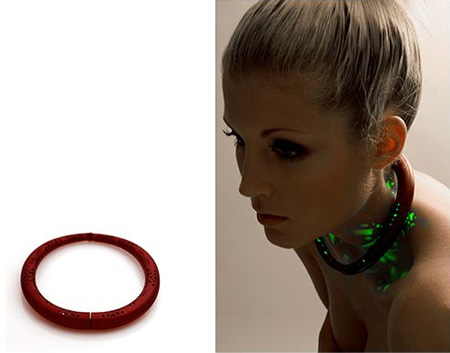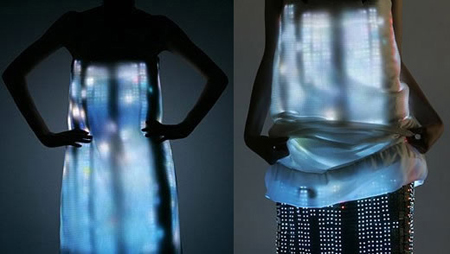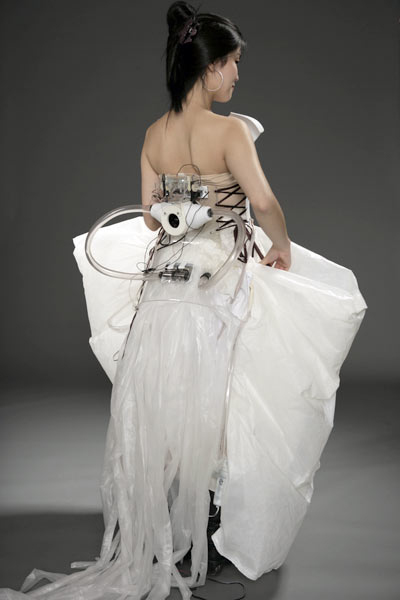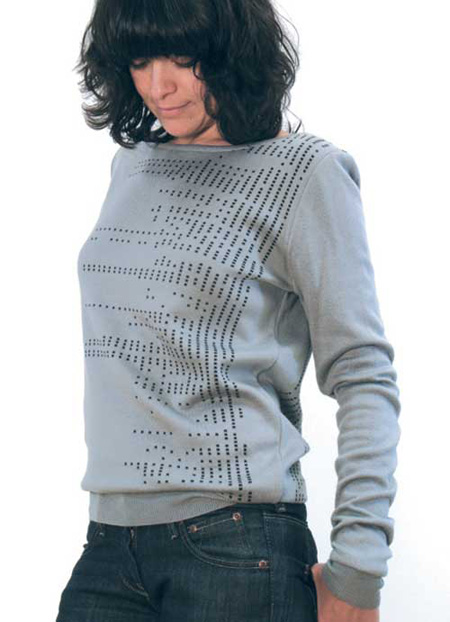 Magdalena Kohler and Hanna Wiesener are exploring the intersection between communication and fashion through their voice knitting collection TRIKOTON. The garments visualize the human voice in a dot-matrix-type knitted pattern creating a new aesthetics of speech pattern that is directly integrated into the textile of the garment. To generate the pattern, Kohler and Wiesener hacked a 1970s mechanical machine to make it interactive and produce the patterns. Here's how they describe how it works:
Magdalena Kohler and Hanna Wiesener are exploring the intersection between communication and fashion through their voice knitting collection TRIKOTON. The garments visualize the human voice in a dot-matrix-type knitted pattern creating a new aesthetics of speech pattern that is directly integrated into the textile of the garment. To generate the pattern, Kohler and Wiesener hacked a 1970s mechanical machine to make it interactive and produce the patterns. Here's how they describe how it works:
"The scheme of pattern cards of old, mechanical knitting machines was used for an audio data program, realised in processing. Now the frequency band of a spoken message is converted into a binary code for knitting patterns. [W]e used 4 microcontroller and 24 small engines in order to imitate a pattern card that could be directly controlled by the voice signals via a computer."
I would love to get my hands on one of these. More info about this project at trikoton.com.
